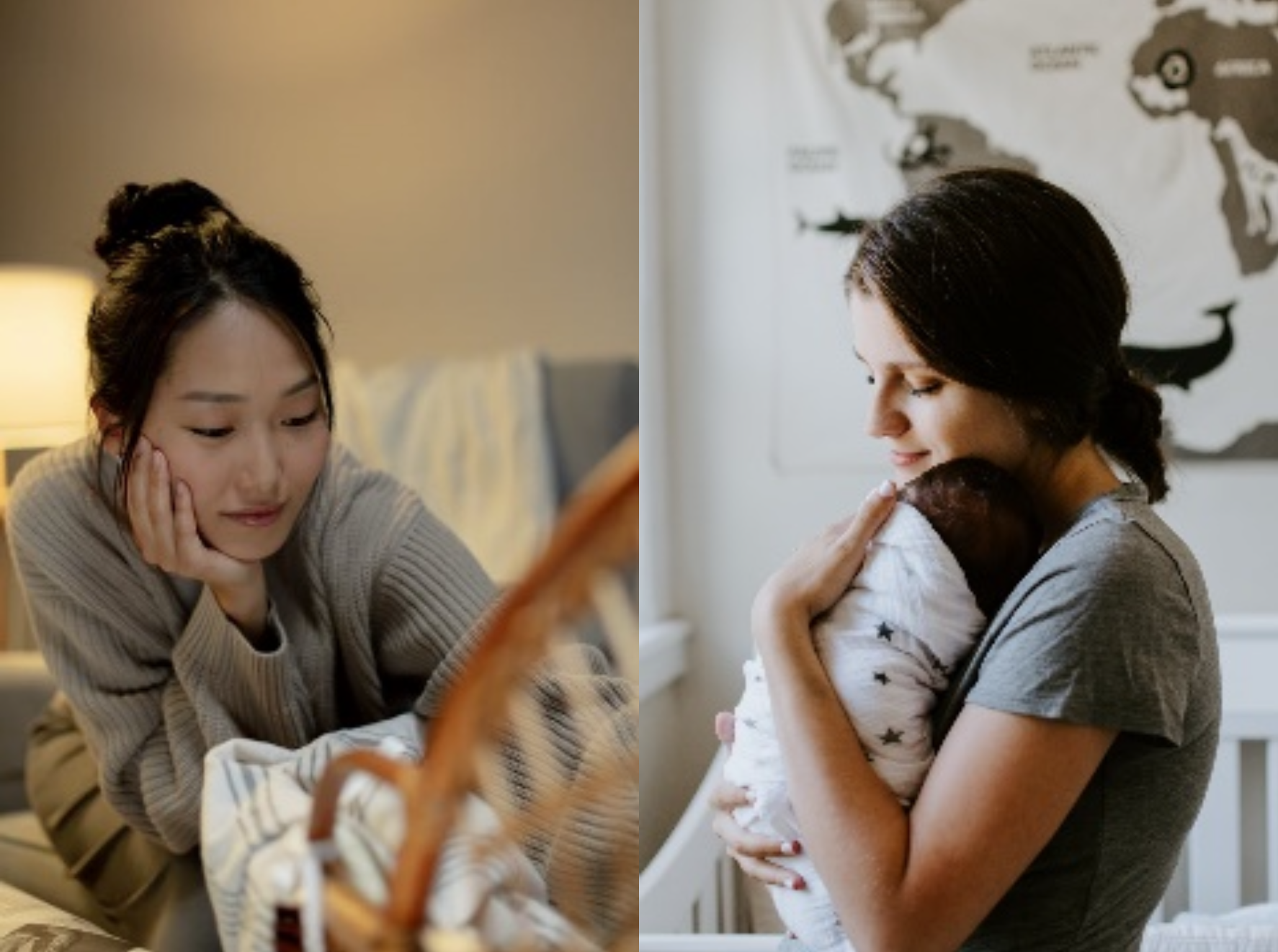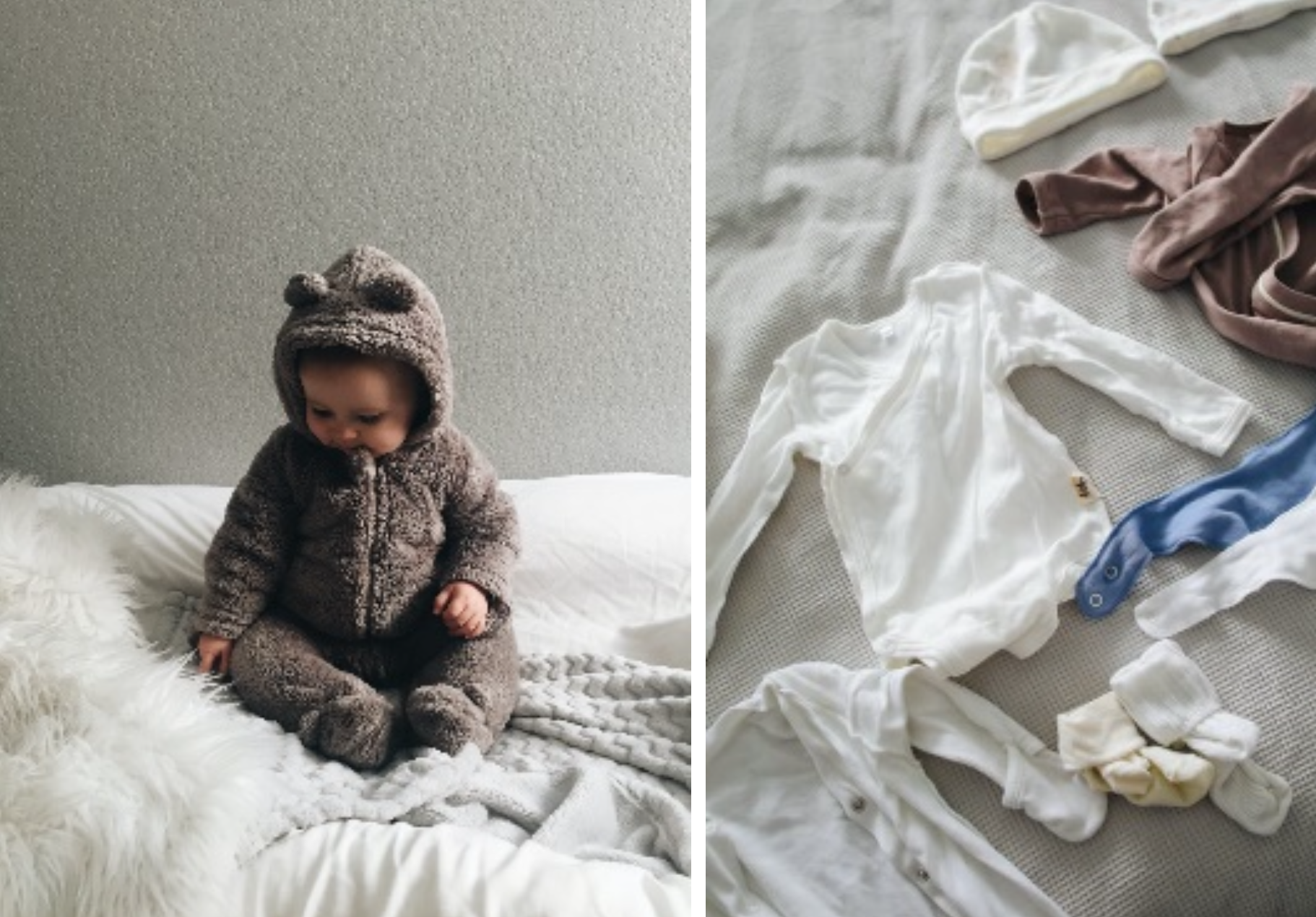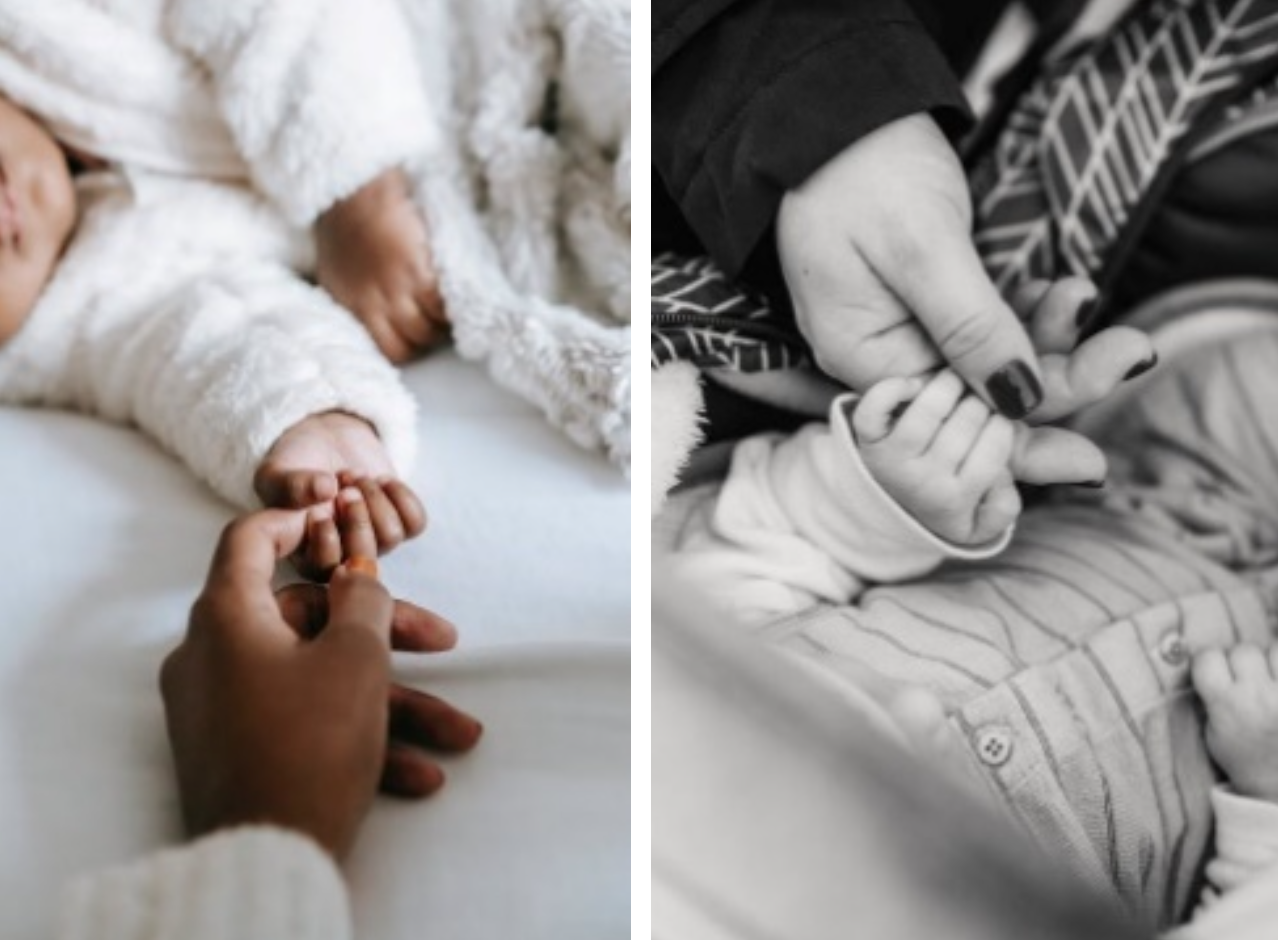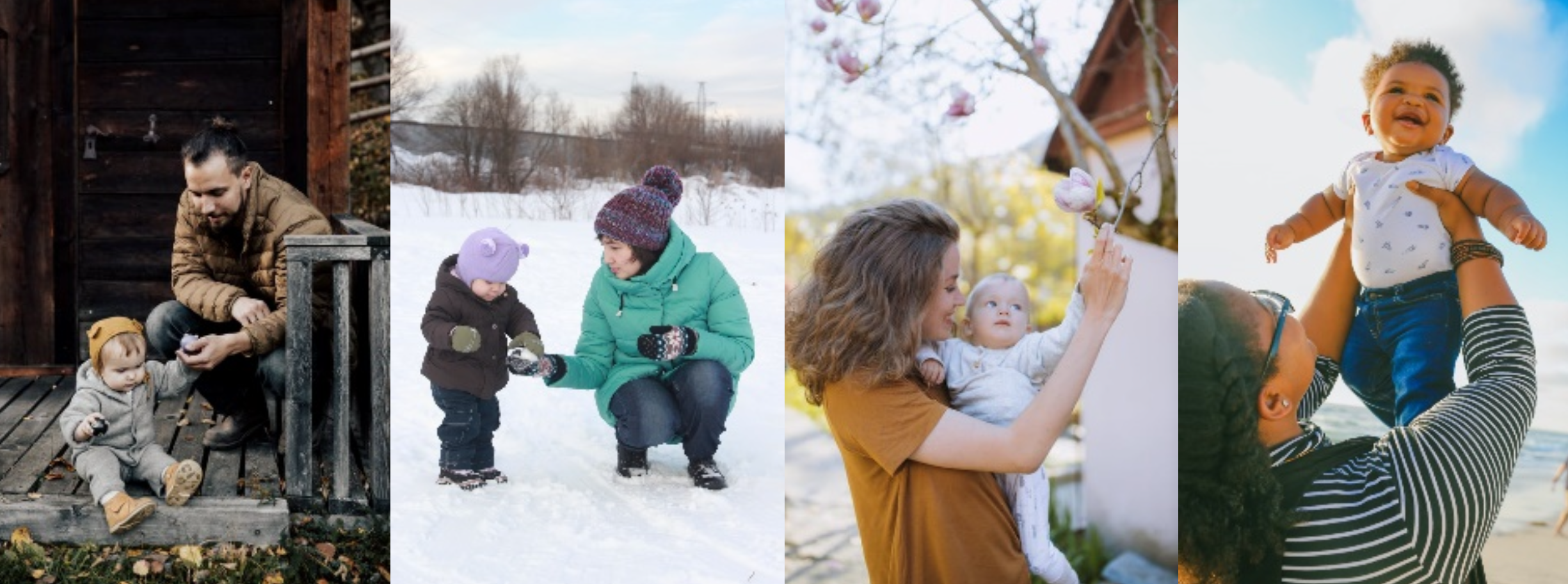Hygge for babies
- Social & Emotional,
- Baby

You may have heard the Danish refer to the warm, comfortable and cosy feeling as ‘hygge’ pronounced (HOO-GAH). Our babies love a ‘hygge’ moment, and they can really benefit from these special times, as can you.
“ Hygge is about an atmosphere and experience, rather than about things. It is about being with the people we love. A feeling of home. A feeling that we are safe, that we are shielded from the world and allow ourselves to let our guard down”
M.Wiking.

The meaning and feeling of ‘hygge’ will vary from person to person. You may be the sort of parent that feels calm and relaxed from sitting in your pyjamas, with a Disney film whilst your baby is on your chest. You may prefer to get wrapped up and go on an autumnal walk and feel the cool sun on your face. It really does not matter what you define as ‘hygge’ but taking time to understand what makes you and your baby feel comfortable, cosy and safe is important.

Some of the things that might make a difference to how you create your own ‘hygge’ include:
Being outside
- Being outdoors can provide calm and comfort for both you and your baby. The reason for this is that the outdoors stimulates our senses, reduces our blood pressure and reduces stress. The relaxed feeling this creates can help you to be more in the moment with your baby. Take time for yourself while out and about and try to observe the signs of the seasons. You can do this by thinking of five things you can see, four things you can feel, three things you can hear, two things you can smell and one thing you can taste. Doing this mindfulness exercise while you are out and engaging all of your senses allows you to become more connected with your body. If your baby is awake and alert, you can talk to them about what you can see and hear as they will just love hearing your voice.
- Some people also find hygge moments in their local garden centre, coffee shop or other days out. Bringing your baby along with you to share the sights, sounds and smells of new environments will help them to build up awareness of their environment, as well as enhance neural connections.
Being at home
- There are elements of our homes that make us feel calm and comfortable, that is why you are encouraged to spend the early parts of labour at home as being more relaxed will help the body to remain calm whilst giving birth. Some of these elements include; the sofa, the bath, our beds, sitting in the garden or cooking up a yummy meal in the kitchen. Think about how you can safely include your baby in these different experiences.
- Can you create a specific hygge space for your baby? Things such as dens are a great way of creating a space that your baby can go to for calm. Some ideas to create a den for your little one include:
- Large box
- Teepee
- Material over chairs
- Material over a large umbrella.
- And extras such cushions, rugs and blankets. You can even add holes in the material for stars or fairy lights (Make sure it's safe for your baby and they’re never left unattended.)
- There may be items in your home that feel ‘hygge’ to you such as blankets and cushions. Also think about the items your baby has in order to feel calm, safe and comforted such as a snuggly blanket or a comforter.

The Clothes You Wear
- We all have clothes that we feel most comfortable and relaxed in and we go to these when we want to chill out or if we feel unwell. Babies have the same sort of sensory needs; however, they are just learning about what feels nice to them. You may find over the coming months that they get upset if they wear certain clothes, are swaddled or have a hat put onto them. These early months are all about learning the needs of your baby and this requires trial and error as you find what they do and do not like.

Being With Loved Ones
- Being with people who make us feel calm, comforted and safe is a big part of understanding the feeling of ‘hygge’ and I am sure we can all name a few people who give us this feeling. When your baby is born… you and their primary caregivers are exclusively this feeling for them. Having this feeling of connection is vital for babies to thrive as being safe and having a feeling of attachment encourages healthy brain development and social and emotional development.

The Senses
- Light – Babies are fascinated by lights as their eyes begin to track different sources around them. But light also can impact our mood. Think about the light you have in your house. Which ones do you put on when you want to feel cosy? Which make you feel relaxed? These can have the same impact on your baby, especially towards sleep times. Many Danish nurseries use Himalayan rock salt lights towards the end of the day to encourage the children to relax into the evening.
- Smells – Smell helps us to trigger memory and different smells can impact our mood. That is why when you smell certain perfumes it can remind you of a cosy warm feeling you had when you were around a certain person. Your baby is picking up on your smell in the same way, so spending time with them on your chest is a great ‘hygge’ moment and is supporting sensory development.
- Sounds – See how your baby reacts to different sounds such as classical music, the doorbell or your dog barking and think about how each makes you feel. When creating your own hygge moments, sound can really be a great way to create a calm atmosphere. You could even ‘ask Alexa’ to play some rain sounds as you prepare your baby for bed and see how this changes the atmosphere.
- Tastes – Your baby’s first taste is milk and then they explore the world through their mouth. Whilst they are not eating just yet the warm cosy feeling they get from each feed is a true ‘hygge’ moment for them and can sometimes be for you too.
-
The Seasons
The seasons all bring about their own unique opportunities for ‘hygge’ moments.
- Spring: Flowers coming up, the light changing, warmer days
- Summer: Picnics, sunshine, sitting outside, paddling pools
- Autumn: Leaves falling, darker nights, cosy evenings, warming up the house
- Winter: Cold on your cheeks, breathing in fresh air, warm food and drink, coming in from being outside.
-
The experiences your baby has both in and out of the home change throughout the seasons and new experiences mean new neural connections in the brain. These provide the ‘footprint’ of their brain and will help them to gain an understanding of the world and how these happenings make them feel. After all, you cannot learn about winter from a book alone! So next time you’re on a walk appreciate how much learning and development could be happening for your baby in the moment, even if it was just so you could get out of the house for half an hour.

Hygge for development
Babies thrive in the warmth and attention of their caregivers so taking opportunities to indulge in these moments of calm is important especially in the fourth trimester where there are still a lot of changes occurring within your baby and you. Some of the benefits of hygge for your baby’s development include:
Cognitive
One of the ways that your baby’s brain will develop is through sensory stimulation and positive interactions with caregivers. ‘Hygge’ is all about warm affirming interactions and moments with people we love and all of this contributes to healthy cognitive development.
Sensory
At the core of the hygge approach is finding what calms and soothes us through our senses. Discovering what that means for your baby can be quite the adventure! The new sensory stimulation they will discover can come from the immediate environment around them and can be as simple as the texture of a blanket or toy. It will also come through their experience of the outdoors. Weather sounds and everything we associate with the changing of the seasons will stimulate their early brain development in a range of positive ways.
Language
All these new, interesting environments and situations also open babies up to the opportunity to be exposed to hearing and experiencing talk and language being used in different ways. From children shouting in the street to you singing gently to them or reading a story. Hearing and observing in context new words, sounds, language and expression will help to support their own language development in the future.
Social and Emotional
Creating calm, serene, safe and nurturing environments for our babies will help them to thrive as it is thought this is the foundation on which their ability to access all other areas of learning and development is built. Feeling safe also allows children to become confident and develop self-esteem. So, is vital for their overall wellbeing and this is at the heart of what ‘hygge’ means.
Well with all of this potential development I’ve never heard a better excuse to get your ‘hygge’ on. So go on, indulge in the cosy, comfortable and safe feeling knowing all of its benefits for you and your baby!
Our app will provide you with more information about ways these early connections lay the foundations for your child’s overall developmental journey.
Further reading suggestions:
- The Danish Way of Parenting: What the Happiest People in the World Know About Raising Confident, Capable Kids - Iben Dissing Sandahl
- The Little Book Of Hygge – Meik Wiking
- There's No Such Thing as Bad Weather: A Scandinavian Mom's Secrets for Raising Healthy, Resilient, and Confident Kids - Linda Keson McGurk